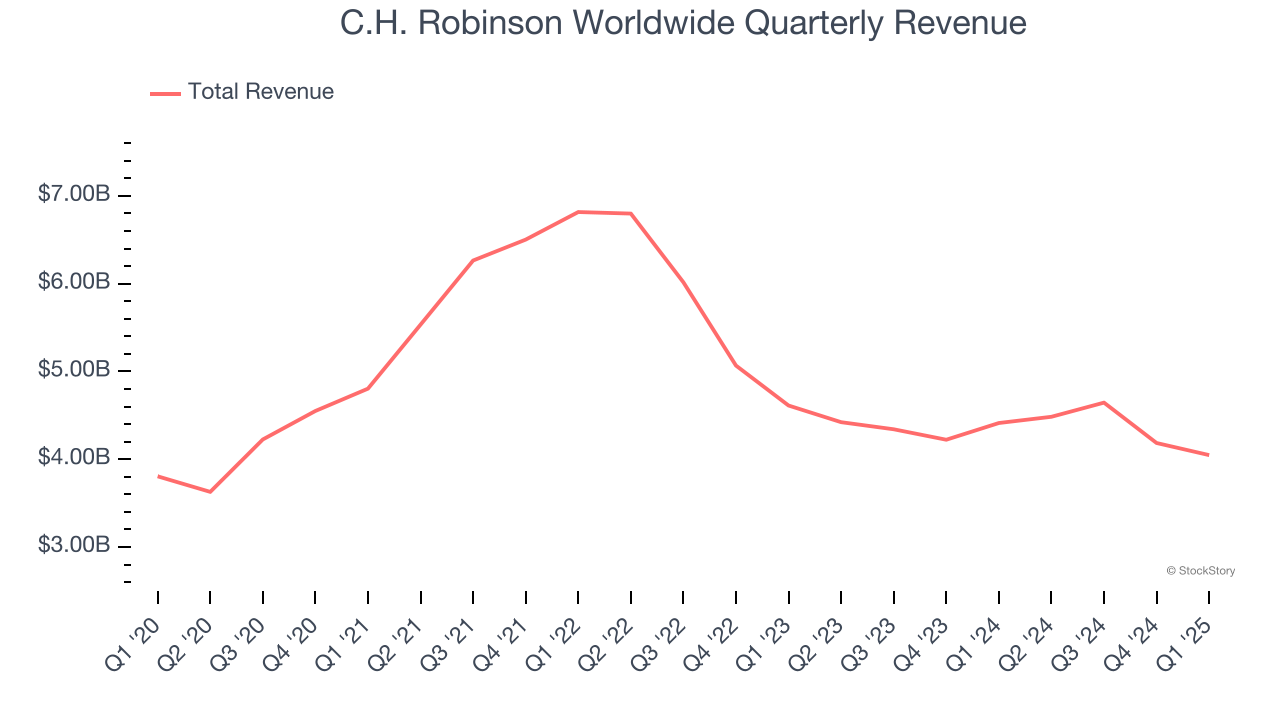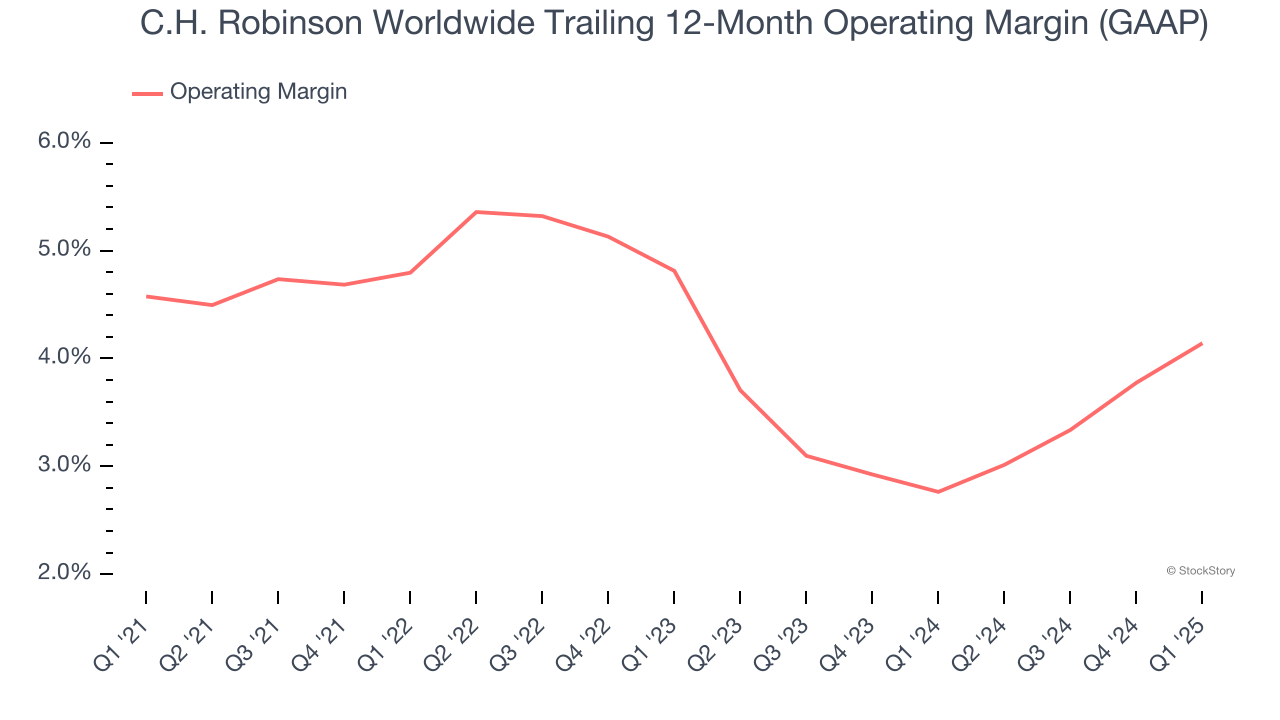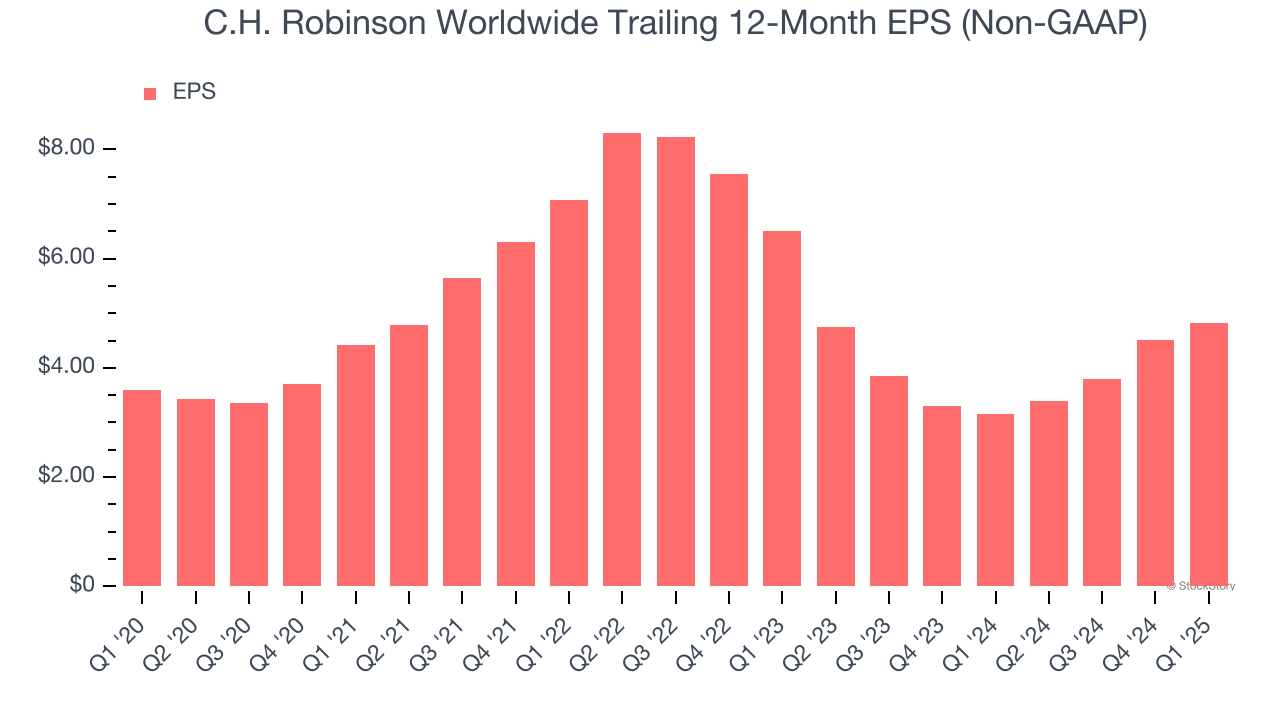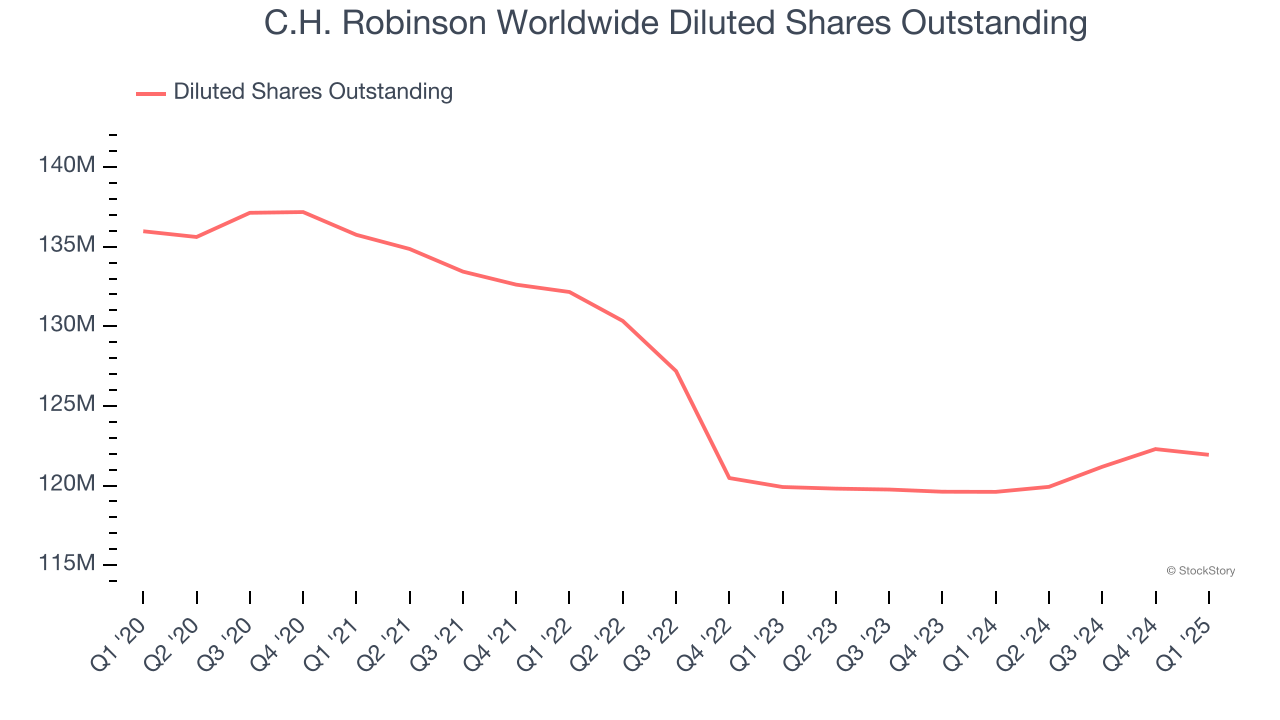
Freight transportation intermediary C.H. Robinson (NASDAQ: CHRW) fell short of the market’s revenue expectations in Q1 CY2025, with sales falling 8.3% year on year to $4.05 billion. Its non-GAAP profit of $1.17 per share was 11.3% above analysts’ consensus estimates.
Is now the time to buy C.H. Robinson Worldwide? Find out by accessing our full research report, it’s free.
C.H. Robinson Worldwide (CHRW) Q1 CY2025 Highlights:
- Revenue: $4.05 billion vs analyst estimates of $4.26 billion (8.3% year-on-year decline, 4.9% miss)
- Adjusted EPS: $1.17 vs analyst estimates of $1.05 (11.3% beat)
- Operating Margin: 4.4%, up from 2.9% in the same quarter last year
- Free Cash Flow was $90.45 million, up from -$55.8 million in the same quarter last year
- Market Capitalization: $10.55 billion
"Our first quarter results reflect progress in the disciplined execution of the strategies that we shared at our Investor Day in December — to take market share and expand our margins. We’re not waiting for a market recovery to improve our financial results, and the strategies that the Robinson team is executing are relevant in any market environment," said President and Chief Executive Officer, Dave Bozeman.
Company Overview
Engaging in contracts with tens of thousands of transportation companies, C.H. Robinson (NASDAQ: CHRW) offers freight transportation and logistics services.
Sales Growth
A company’s long-term performance is an indicator of its overall quality. Any business can experience short-term success, but top-performing ones enjoy sustained growth for years. Over the last five years, C.H. Robinson Worldwide grew its sales at a sluggish 2.5% compounded annual growth rate. This fell short of our benchmarks and is a rough starting point for our analysis.

We at StockStory place the most emphasis on long-term growth, but within industrials, a half-decade historical view may miss cycles, industry trends, or a company capitalizing on catalysts such as a new contract win or a successful product line. C.H. Robinson Worldwide’s performance shows it grew in the past but relinquished its gains over the last two years, as its revenue fell by 12.1% annually. C.H. Robinson Worldwide isn’t alone in its struggles as the Air Freight and Logistics industry experienced a cyclical downturn, with many similar businesses observing lower sales at this time. 
C.H. Robinson Worldwide also breaks out the revenue for its most important segments, North American surface transportation and Global Forwarding, which are 70.9% and 19.1% of revenue. Over the last two years, C.H. Robinson Worldwide’s North American surface transportation revenue (transportation brokerage) averaged 11.6% year-on-year declines while its Global Forwarding revenue (worldwide ocean, air, customers ) averaged 5.6% declines.
This quarter, C.H. Robinson Worldwide missed Wall Street’s estimates and reported a rather uninspiring 8.3% year-on-year revenue decline, generating $4.05 billion of revenue.
Looking ahead, sell-side analysts expect revenue to grow 2% over the next 12 months. While this projection suggests its newer products and services will fuel better top-line performance, it is still below the sector average.
Today’s young investors won’t have read the timeless lessons in Gorilla Game: Picking Winners In High Technology because it was written more than 20 years ago when Microsoft and Apple were first establishing their supremacy. But if we apply the same principles, then enterprise software stocks leveraging their own generative AI capabilities may well be the Gorillas of the future. So, in that spirit, we are excited to present our Special Free Report on a profitable, fast-growing enterprise software stock that is already riding the automation wave and looking to catch the generative AI next.
Operating Margin
Operating margin is an important measure of profitability as it shows the portion of revenue left after accounting for all core expenses – everything from the cost of goods sold to advertising and wages. It’s also useful for comparing profitability across companies with different levels of debt and tax rates because it excludes interest and taxes.
C.H. Robinson Worldwide was profitable over the last five years but held back by its large cost base. Its average operating margin of 4.3% was weak for an industrials business. This result isn’t too surprising given its low gross margin as a starting point.
Looking at the trend in its profitability, C.H. Robinson Worldwide’s operating margin might fluctuated slightly but has generally stayed the same over the last five years. This raises questions about the company’s expense base because its revenue growth should have given it leverage on its fixed costs, resulting in better economies of scale and profitability.

In Q1, C.H. Robinson Worldwide generated an operating profit margin of 4.4%, up 1.5 percentage points year on year. Since its gross margin expanded more than its operating margin, we can infer that leverage on its cost of sales was the primary driver behind the recently higher efficiency.
Earnings Per Share
Revenue trends explain a company’s historical growth, but the long-term change in earnings per share (EPS) points to the profitability of that growth – for example, a company could inflate its sales through excessive spending on advertising and promotions.
C.H. Robinson Worldwide’s EPS grew at an unimpressive 6% compounded annual growth rate over the last five years. This performance was better than its flat revenue but doesn’t tell us much about its business quality because its operating margin didn’t expand.

Diving into the nuances of C.H. Robinson Worldwide’s earnings can give us a better understanding of its performance. A five-year view shows that C.H. Robinson Worldwide has repurchased its stock, shrinking its share count by 10.3%. This tells us its EPS outperformed its revenue not because of increased operational efficiency but financial engineering, as buybacks boost per share earnings. 
Like with revenue, we analyze EPS over a shorter period to see if we are missing a change in the business.
For C.H. Robinson Worldwide, its two-year annual EPS declines of 14% show it’s continued to underperform. These results were bad no matter how you slice the data.
In Q1, C.H. Robinson Worldwide reported EPS at $1.17, up from $0.86 in the same quarter last year. This print easily cleared analysts’ estimates, and shareholders should be content with the results. Over the next 12 months, Wall Street expects C.H. Robinson Worldwide’s full-year EPS of $4.81 to stay about the same.
Key Takeaways from C.H. Robinson Worldwide’s Q1 Results
It was encouraging to see C.H. Robinson Worldwide beat analysts’ EPS expectations this quarter. On the other hand, its revenue missed significantly due to underperformance in its North American surface transportation segment. Overall, this was a weaker quarter, but the stock traded up 1.6% to $90.53 immediately after reporting.
Is C.H. Robinson Worldwide an attractive investment opportunity right now? The latest quarter does matter, but not nearly as much as longer-term fundamentals and valuation, when deciding if the stock is a buy. We cover that in our actionable full research report which you can read here, it’s free.







